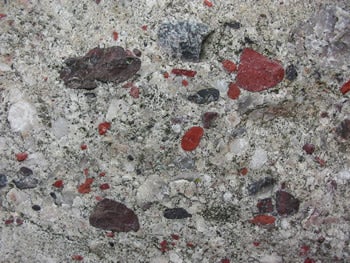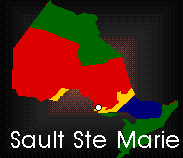

This iconic red jasper conglomerate is affectionately referred to as "Michigan puddingstone" or "Drummond Island puddingstone" by locals and is used as a decorative stone. The formation itself lies east of Sault St. Marie, along the north shore of the Georgian Bay- but when the glaciers came by, they scraped out chunks of this conglomerate and carried it with them, as far away as Southwest Iowa!1 The easily-recognizable red pebbles of this formation meant that this stone was an excellent tool to track past glacial activity. Boulders that are carried far, far away by glaciers are called glacial erratics. The conglomerate in our garden was actually a glacial erratic, too, found at a gravel pit near Sault Ste. Marie!
1Chester B. Slawson. "The Jasper Conglomerate, an Index of Drift Dispersion." The Journel of Geology, Jul. - Aug., 1933, Vol. 41, No. 5 (Jul. - Aug., 1933), pp. 546-552